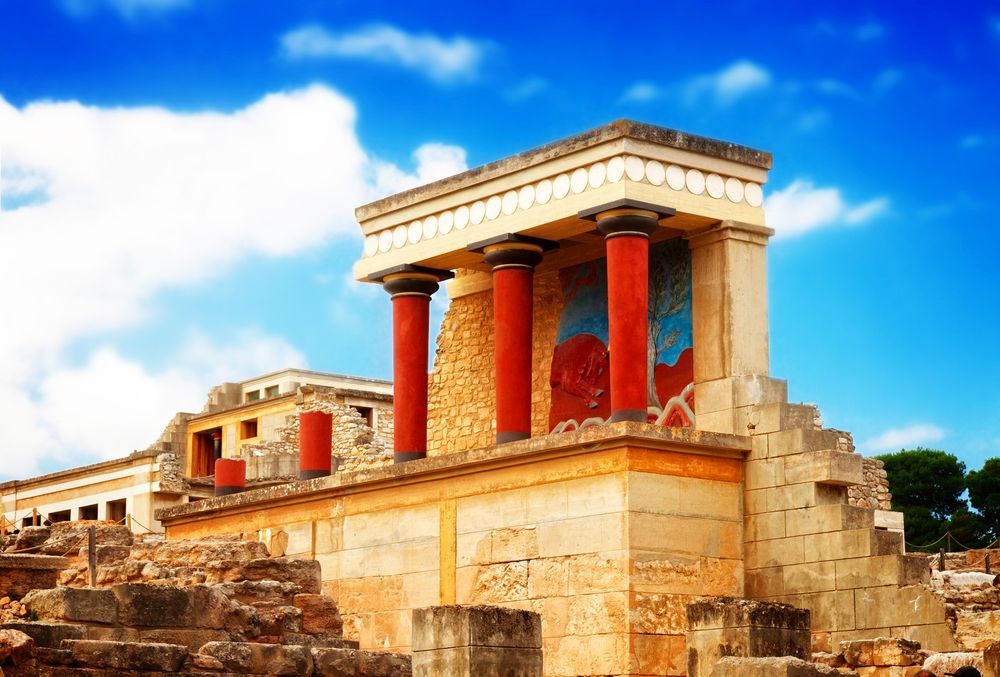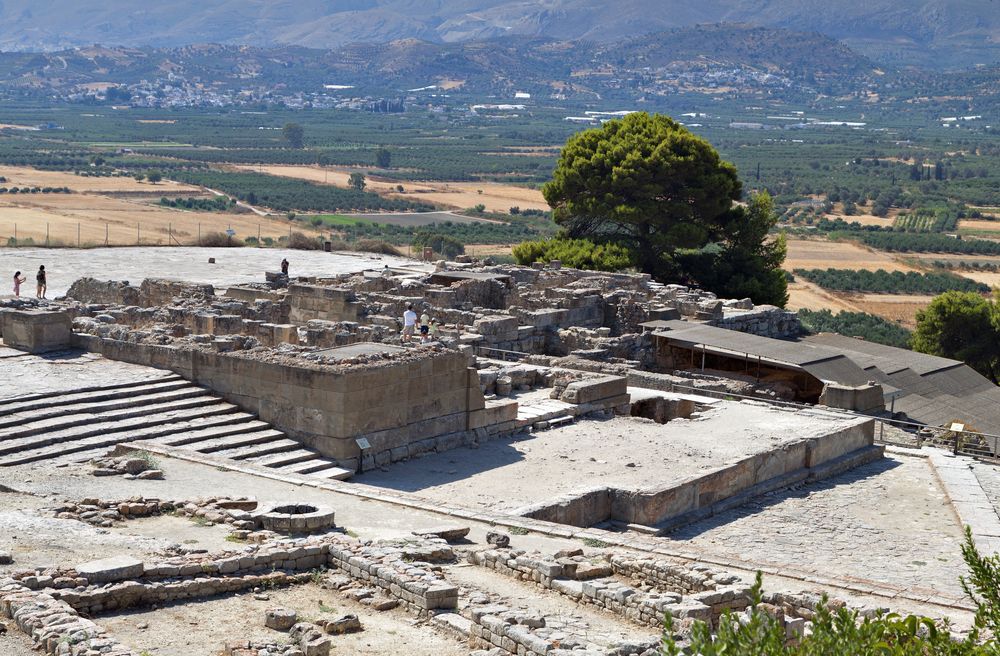
Crete is undoubtedly rich in history and mythology. Knossos and Phaistos are two of its most fascinating historical sites, which provide a remarkable insight into the Minoan civilization, one of Europe’s earliest advanced cultures. Exploring these ancient ruins allows visitors to travel back over 3,000 years and witness the splendor of a once-flourishing society.
Knossos: The Legendary Palace of King Minos
Knossos, located near Heraklion, is perhaps the most famous of Crete’s archaeological sites. According to legend, it was the palace of King Minos and the labyrinthine home of the mythical Minotaur. Excavated by Sir Arthur Evans in the early 20th century, Knossos reveals a complex and sophisticated palace that was the political and ceremonial center of the Minoan civilization.
The palace complex, covering over 20,000 square meters, is a labyrinth of rooms, corridors, and courtyards. Visitors can marvel at the grandeur of the Throne Room, the vibrant frescoes depicting scenes of Minoan life, and the advanced architectural features such as the elaborate drainage system. Highlights include the “Bull-Leaping” fresco, the Queen’s Megaron with its dolphin fresco, and the grand staircase leading to the upper levels.
Strolling through Knossos, visitors can envision the lively palace filled with courtiers, artisans, and priests engaged in daily activities. The site vividly showcases the Minoans’ sophistication and artistry, making it a must-see for both history enthusiasts and casual tourists.
Phaistos: A Glimpse into Minoan Daily Life

Located in the fertile Mesara Plain, the ancient city of Phaistos offers another captivating window into the Minoan world. As a significant center of Minoan civilization, Phaistos and its palace, though less restored than Knossos, offer an equally captivating exploration of ancient life.
There have been many artifacts discovered at Phaistos, including the famous Phaistos Disc, a unique clay disc with a mysterious script. The palace itself, built on a hillside with stunning views of the surrounding plains and mountains, features a complex of rooms and courtyards that hint at the daily life and administrative activities of the Minoans.
Visitors can explore the grand central courtyard, royal apartments, and storage rooms filled with large pithoi (storage jars). The architectural design of Phaistos, featuring open-air theaters and ceremonial spaces, showcases the social and religious life of the Minoans. Its more rustic and less reconstructed appearance adds unique charm and offers a raw connection to the ancient past.
Experiencing the Minoan Legacy
Both Knossos and Phaistos give us important information about the Minoan civilization’s art, buildings, and city planning. These ancient places show the impressive Minoan palaces and the advanced society that influenced the Aegean and Mediterranean regions.
Walking through the ruins of Knossos and Phaistos, visitors can feel the echoes of a long-lost world, making these sites essential stops on any cultural tour of Crete. They offer a profound appreciation for the island’s rich history and the enduring legacy of the Minoan civilization. If you are a history enthusiast or simply curious, a visit to these ancient sites is a journey through time that you won’t soon forget.





